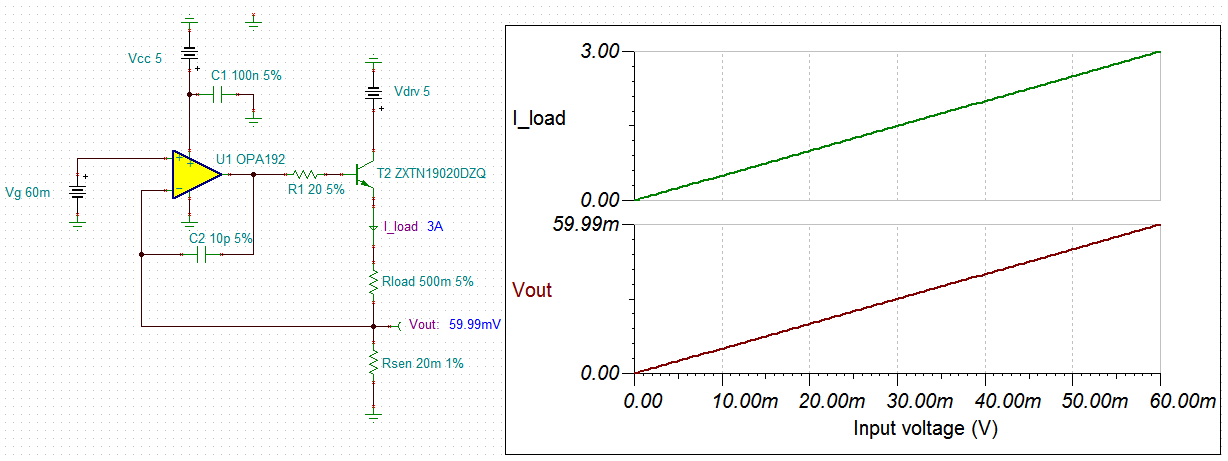Other Parts Discussed in Thread: OPA548, OPA192, OPA541, OPA549
Hi team,
I saw a TI design about 500mA output which is "1% Error, 0-5 V Input, 0-500 mA Output, Low-Side Voltage to-Current (V-I) Converter".

May I know that could it achieve 3A output current?
If yes, how should I modify it?
Thank you.
Best Regards,
Cindy


